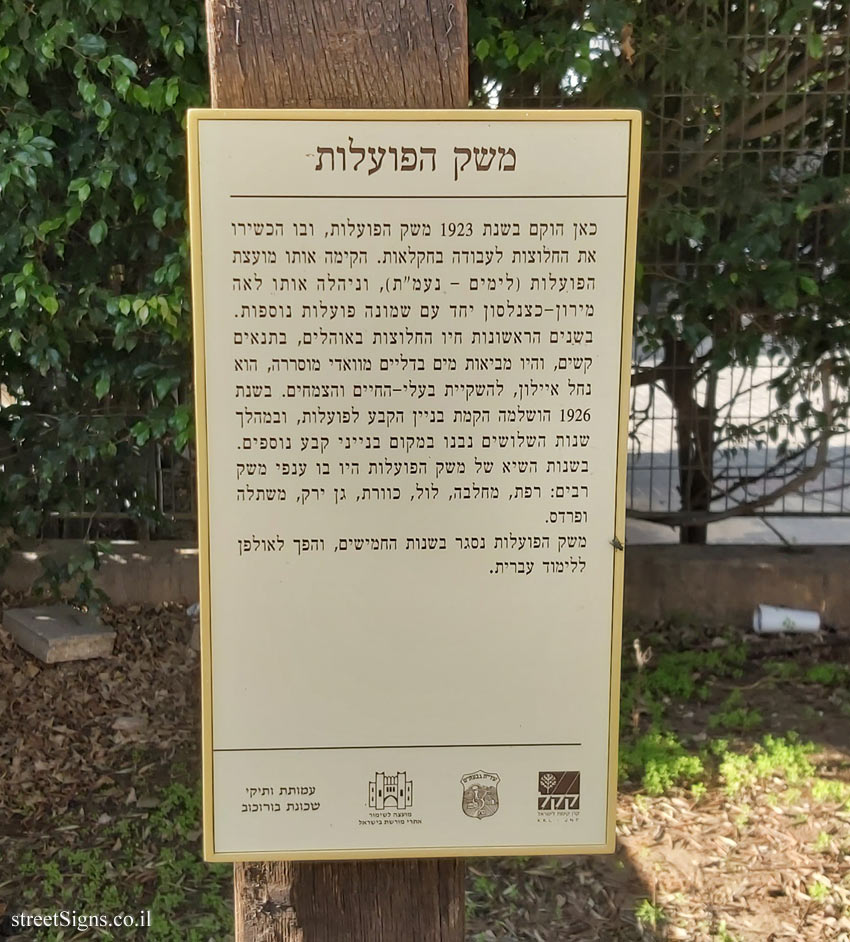A station on the ""Rishonim route", set up by a joint initiative of the Givatayim Municipality and the veterans association of Borochov neighborhood, featuring signs that mention the homes and institutions in Borochov neighborhoods.
The site description appears on a separate sign
 Click for a larger image
Click for a larger image The place where the sign is located was photographed that day
 Click for a larger image Translation of the text on the sign
Click for a larger image Translation of the text on the sign:
Borochov neighborhood
The working women farm
[Site description appears on separate sign]
The working women farm A workers’ farm was established here in 1923, where the pioneers were trained to work in agriculture. It was established by the Workers’ Council (later NAMAT), and was run by Leah Miron-Katzenelson along with eight other workers.
In the early years, the pioneers lived in tents, in harsh conditions, and would bring water in buckets from Wadi Musrara, which is the Ayalon River, to irrigate the animals and plants. In 1926, the construction of the permanent building for the workers was completed, and during the 1930s, additional permanent buildings were built on the site. In the peak years of the workers’ farm, it had many branches of the farm: a barn, a dairy, a chicken coop, a hive, a vegetable garden, a nursery and an orchard.
The workers’ farm closed in the 1950s, and became an Ulpan for learning Hebrew.
JNF (Jewish National Fund) emblem, Givatayim emblem
Symbol of the Council for the Preservation of Heritage Sites - Israel
Veterans Association Borochov neighborhood

 Click for a larger image
Click for a larger image  Click for a larger image
Click for a larger image  Click for all signs belonging to Givatayim - Rishonim route
Click for all signs belonging to Givatayim - Rishonim route
 65 Meter |
65 Meter |  67 Meter |
67 Meter |  139 Meter |
139 Meter |  162 Meter |
162 Meter |  306 Meter
306 Meter